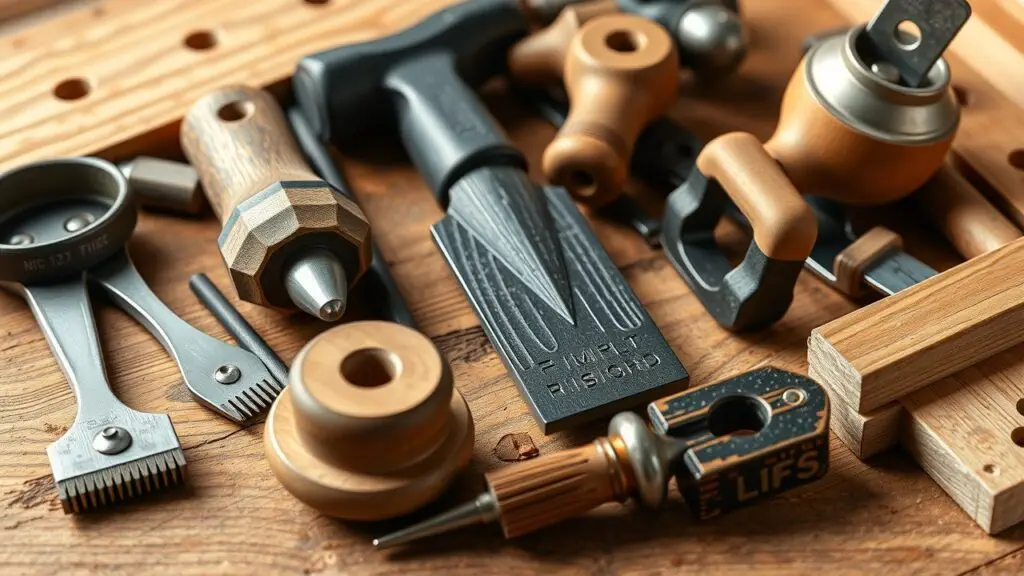Types of carpenters specialize in various areas, from rough framing and structural work to fine woodworking and intricate trim. This guide breaks down the different types of carpentry, explaining their roles and skills in construction and home building.
What Are the Different Types of Carpenters?

Carpentry is a trade that works with wood to build things like houses and furniture. There are different types of carpenters, and knowing about these can help you hire the right person for your project or even pick a career path. Here’s a look at the major types of carpenters:
- Rough Carpenter: Also known as a framer, these carpenters build the strong parts of buildings. They work on walls, roofs, and floors.
- Finish Carpenter: Sometimes called trim carpenters, they add the finishing touches to projects. This includes putting up moldings and installing cabinets.
- Cabinet Maker: These specialists create custom furniture, especially cabinets and shelves. They use their design skills to make functional and beautiful pieces.
- Shipwright: Shipwrights build and fix boats using special marine-grade wood. They know how to work with watercraft designs and construction methods.
- Restoration Carpenter: These carpenters restore old furniture or historical buildings. They use traditional techniques to keep the original style intact.
Major Types of Carpenters
Different jobs need different kinds of carpenters:
Residential Carpenter
- Works mostly on houses.
- Takes care of framing new homes and putting in kitchen cabinets.
Commercial Carpenter
- Focuses on bigger projects like office buildings or stores.
- Often works with complex designs along with architects.
Industrial Carpenter
- Works in large factories.
- May build forms for concrete or put together heavy machinery parts.
Each type plays an important part in making sure projects are done well—from building new places to fixing up old ones.
Rough Carpenters Explained: Skills and Responsibilities
Rough carpenters, also called framers, are super important in the construction world. They focus on building the main structure of buildings. This includes walls, floors, and roofs. Their work is key to making sure a building is safe and sturdy.
Key Skills and Responsibilities
Rough carpenters need some important skills:
- Framing Techniques: They must know how to frame things right.
- Tool Use: They should be good with tools like nail guns and power saws.
- Blueprint Reading: They need to read plans to do their jobs well.
Some main tasks include:
- Building frameworks for new homes or big commercial buildings.
- Working fast and accurately to meet deadlines.
- Teaming up with other workers on-site for smooth construction.
Typical Projects
Rough carpenters usually work on many kinds of projects like:
- New homes where they create the first framework.
- Large commercial structures needing a lot of framing.
Their skill to get quality work done quickly makes them essential in both residential and commercial jobs.
Formwork and Shuttering Carpenters in Construction Projects
Formwork and shuttering carpenters have a special job in the building trades. They prepare concrete forms for foundations and other structures. These experts make sure concrete cures correctly by building strong falsework that holds wet concrete until it sets.
Essential Skills
To do their job well, formwork carpenters need certain skills:
- Precise Measuring: They must measure correctly to keep things stable while curing.
- Material Knowledge: Knowing about different materials used for forming systems is important.
Project Types
These carpenters often work on projects such as:
- Residential foundations where getting measurements right is very important.
- Big commercial projects that follow strict safety rules during construction.
The know-how of formwork carpenters helps ensure that all concrete forming is done perfectly, leading to project success.
What Does a Finish Carpenter Do?
Finish carpenters are skilled workers who focus on the detailed parts of building and fixing homes. They do precise tasks like putting in trim, which includes crown molding, fitting doors and windows, and making cabinets. Their work is key for getting high-quality finishes in both homes and businesses.
Key Skills Required for Finish Carpentry
To be a great finish carpenter, you need strong skills in measuring and cutting materials accurately. You must know how to use tools like power saws and nail guns properly. Using levels, chisels, clamps, and sandpaper is also important. These skills help ensure that the installations look good and stay strong.
Ideal Use Cases for Renovations or Custom Interior Design Projects
Finish carpenters often work on home renovations where looks matter a lot. They can change spaces with designs that fit what the client wants. Common projects include kitchen makeovers with custom cabinets or living rooms that feature fancy moldings. Their knowledge makes sure that every part adds to the home’s overall style.
Trim vs Finish Carpentry Differences You Should Know About
While all finish carpenters might do some trimming work, trim carpenters only focus on this part of the job. Knowing the difference between these roles helps clients figure out which type of worker they need for their specific project.
Responsibilities of Trim Carpenters
Trim carpenters take care of adding finishing touches to homes or buildings by installing baseboards and other types of moldings around windows and doors. They check that every detail matches the design plans while keeping a high level of craftsmanship.
Tools Commonly Used by Finish Carpenters
Finish carpenters use many tools, including:
- Miter Saws: For making precise angle cuts.
- Nail Guns: For quick assembly.
- Levels: To make sure everything is straight.
- Chisels: For detailed woodwork.
- Clamps: To hold pieces together during assembly.
- Sandpaper: To make surfaces smooth before painting or staining.
Exploring Other Aspects of Interior & Exterior Work
Besides working inside homes, finish carpenters also handle outdoor projects! This includes building porches or patios that look nice and lead into gardens. All these tasks need different skills but fall under finish carpentry when done well.
Understanding these different jobs within this field helps clients make better choices about who to hire based on their needs!
Cabinet Makers vs General Carpenters – Who to Hire?
Cabinet makers and general carpenters have different jobs in woodworking and construction. Knowing these differences helps homeowners or contractors pick the right pro for their needs.
Skills and Techniques of Cabinet Makers
Cabinet makers are skilled artists. They focus on making high-quality cabinets and furniture. They use advanced woodworking techniques that need careful attention to detail. Tools like CNC machines help them create detailed designs accurately. Common projects include kitchen cabinets, built-in shelves, or custom cabinetry that fits unique spaces.
Key skills of cabinet makers:
- Precision Cutting: They use saws and routers for exact measurements.
- Joinery Techniques: They master methods like dovetail joints and mortise-and-tenon joints.
- Finishing Skills: They apply stains, paints, or varnishes for a polished look.
General Carpenter Responsibilities
General carpenters do a wide range of tasks. They frame structures, install doors and windows, and more. Their skills let them work on different projects like home renovations or new buildings.
Common responsibilities may include:
- Framing Walls: Building the framework for houses.
- Installing Fixtures: Putting in doors, windows, trim work, etc.
- Repair Work: Fixing damaged woodwork in homes.
They can handle many carpentry jobs beyond just cabinetry.
When to Choose a Cabinet Maker Over a General Carpenter?
If your project needs special skills for detailed woodwork or custom designs—like fitted wardrobes or intricate moldings—a cabinet maker is usually the better choice. If you need general construction services like framing walls or basic cabinet installation without complex designs, a general carpenter would be more suitable.
Project Type vs Best Professional:
| Project Type | Best Professional |
|---|---|
| Custom cabinetry | Cabinet maker |
| Detailed furniture | Cabinet maker |
| Framing walls | General carpenter |
| Basic installations | General carpenter |
Choosing between a cabinet maker and a general carpenter depends on your project’s complexity and requirements. Think about the type of work involved and your budget when making this choice.
Shipwrights’ Role in Boat Building & Repairs Explained
Shipwrights are skilled carpenters who build and repair boats and ships. They work mainly with marine-grade wood, which is important for durability and resisting water damage. These craftsmen play a vital role in creating new vessels and keeping older ones in shape, especially when it comes to wooden boat hull repairs.
Key Skills and Tools Used by Shipwrights
To be a successful shipwright, you need to know a lot about naval architecture. This means understanding how different designs can affect things like stability and buoyancy. Woodworking techniques are also key; shipwrights must be good at shaping wood to fit certain needs while making sure it stays strong.
Some common tools used by shipwrights include:
- Saws: For cutting wood into specific shapes.
- Chisels: For carving details or joining pieces.
- Planes: For smoothing wood surfaces.
- Clamps: To hold materials securely during building.
With these skills and tools, shipwrights can take on complicated projects with ease.
Common Projects for Shipwrights
Shipwrights work on many different projects that show off their skills. Here are some typical tasks they handle:
- Repairing Boats: Fixing damages that happen over time or from accidents.
- Constructing Docks from Scratch: Building sturdy docks that can handle tough marine conditions requires careful planning.
- Custom Marine Projects: Many shipwrights take on special jobs where clients want unique features for their boats.
Through these diverse projects, shipwrights make a big impact on maritime craftsmanship.
Restoration Carpentry Techniques Used in Historic Preservation Projects
Restoration carpentry aims to keep historic buildings safe while honoring their original designs. This often means using antique building materials that follow preservation standards to maintain authenticity.
Importance of Historical Guidelines Compliance
Sticking to historical guidelines is really important in restoration carpentry projects. These rules help make sure that any work done respects traditional carpentry practices, which helps protect the cultural heritage of vintage structures.
Typical Tasks in Restoration Carpentry
Tasks done by restoration carpenters often include fixing up vintage buildings while keeping their architectural style intact. This could involve repairing old features like moldings or windows using methods that respect the craftsmanship of the past without risking safety or function.
Exploring Less Common Carpentry Specializations

Carpentry has many special areas that meet different needs. Knowing about these specialties can help homeowners and builders choose the right person for their projects or decide on a career in carpentry.
Cornice Carpenters and Their Unique Craft
Cornice carpenters create decorative moldings for ceilings and walls. These skilled workers focus on architectural millwork. This means they build custom pieces to make a space look better. Precision cutting is very important in this job. Cornice carpenters must measure carefully so everything fits perfectly. They also need good installation skills, working with materials like wood, plaster, or synthetic products to craft intricate designs that add charm to homes.
Green Carpenters: Sustainable Practices in Carpentry
Green carpenters care about the environment. They use sustainable building materials and eco-friendly methods. Their goal is to reduce waste and lessen the impact on nature. Here are some common practices they use:
- Renewable Resources: They often use reclaimed wood or bamboo, which helps protect forests.
- Waste Reduction: They plan carefully to minimize leftover materials during construction.
- Energy Efficiency: They suggest designs that save energy over time.
By focusing on these techniques, green carpenters help create buildings that are better for our planet.
Timber Framers: Traditional Techniques with Modern Applications
Timber framing is an old craft where big wooden beams are joined with pegs or special joints instead of nails. This method makes strong and beautiful structures. Today’s timber framers mix these traditional ways with modern needs. They maintain the beauty of historical styles while adapting for new buildings. This blend of old skills and new ideas is important for both homes and businesses today.
Joinery Specialists: The Art of Wood Connections
Joinery specialists create strong connections between pieces of wood using various joinery techniques. A joiner works mainly on fine furniture where details matter a lot. They often use joints like dovetail joints, which not only add strength but also look great. Learning different types of joints allows joinery specialists to make high-quality pieces customized for their clients.
Furniture Makers vs. General Carpenters – Key Differences
Furniture makers and general carpenters have different skills and focus areas. General carpenters might work on large projects like building houses or installing cabinets. In contrast, furniture makers pay close attention to detail in creating unique pieces:
- Project Scope: Furniture makers work on custom items while general carpenters handle bigger tasks.
- Skills Needed: Making furniture requires specialized techniques that differ from general carpentry.
Understanding these differences can help you choose the right expert for your project.
Finding the Right Carpenter for Your Project
Choosing the right carpenter for your project is really important. There are different types of carpenters with various specialties. Most carpenters fall into two main categories: residential and commercial. Residential carpenters work on home projects, like building decks or putting in cabinets. Commercial carpenters take on larger jobs, such as constructing office buildings or stores.
Factors to Consider When Hiring a Carpenter
When you’re ready to hire a carpenter, think about these key factors:
- Project Specifications: Be clear about what you want. Are you looking for custom shelves or fixing a roof? Knowing exactly what you need helps find the right carpenter.
- Budget: Figure out how much money you can spend. Different carpentry services have different costs based on what needs to be done and the materials used.
- Aesthetic Preferences: Consider the style you like—modern, traditional, or rustic? This helps match you with a carpenter who has a similar style in their work.
- Experience: Look for a carpenter who has experience that fits your project needs. For example, if you need fine woodworking, find someone skilled in that area instead of heavy construction.
Questions to Ask Potential Carpenters
When talking to potential carpenters, ask questions that will help clarify their skills:
- What does your estimate include?
- How do you decide the cost of my project?
- Can I see examples of similar work you’ve done?
These questions will help ensure that you choose the right contractor for your needs.
Best Practices for Hiring a Carpenter
To keep your project running smoothly:
- Contracts: Always get a written contract that outlines the scope of work and payment terms before starting any job.
- Insurance for Contractors: Make sure they have liability insurance. This protects you in case accidents happen at your property while they work.
- Communication in Construction Projects: Keep communication open throughout the project so any issues can be dealt with quickly.
By keeping these tips in mind when searching for various types of carpenters, you’ll increase your chances of completing your renovation or building project successfully while staying within your budget and meeting your quality expectations.
FAQs about Types of Carpenters
What are the main types of carpenters?
The main types of carpenters include rough carpenters, finish carpenters, cabinet makers, shipwrights, and restoration carpenters.
What skills do different carpenters need?
Carpenters need skills in measuring, cutting, and assembling wood. They also require tool knowledge and blueprint reading skills.
How do I choose the right carpenter for my project?
Choose a carpenter based on their specialty. Consider the type of work you need done and their experience level.
What is the salary range for various carpentry jobs?
Salaries vary by specialization. Generally, experienced carpenters earn higher wages than apprentices or entry-level workers.
Are there educational requirements for carpentry?
Yes, many carpenters complete apprenticeships or attend trade schools to learn essential skills.
Key Considerations in Carpentry
- Types of Carpentry: Understand the distinctions between residential, commercial, and industrial carpentry.
- Carpentry Tools: Common tools include saws, chisels, nail guns, and levels.
- Construction Safety: Follow guidelines to ensure a safe working environment.
- Eco-Friendly Carpentry: Use sustainable building materials to reduce environmental impact.
- Carpentry Specialties: Explore options like timber framing, joinery, and antique restoration for unique projects.
- Building Regulations: Familiarize yourself with local codes before starting any construction work.
- Carpentry Projects: From renovations to new constructions, every project requires different expertise.
By considering these aspects, you can make informed decisions when hiring a carpenter for your needs.
Related Topics
- Types of Carpentry Projects
- Types of Carpentry Tools
- Types of Wood Joints
- Types of Wood
- Types of Construction Projects
- Types of Building Materials
- Types of Cabinetry
- Types of Moldings
- Types of Roofing
- Types of Flooring
- Types of Doors and Windows
- Types of Restoration Techniques
- Types of Sustainable Building Practices



Types of Carpenters: A Complete Guide